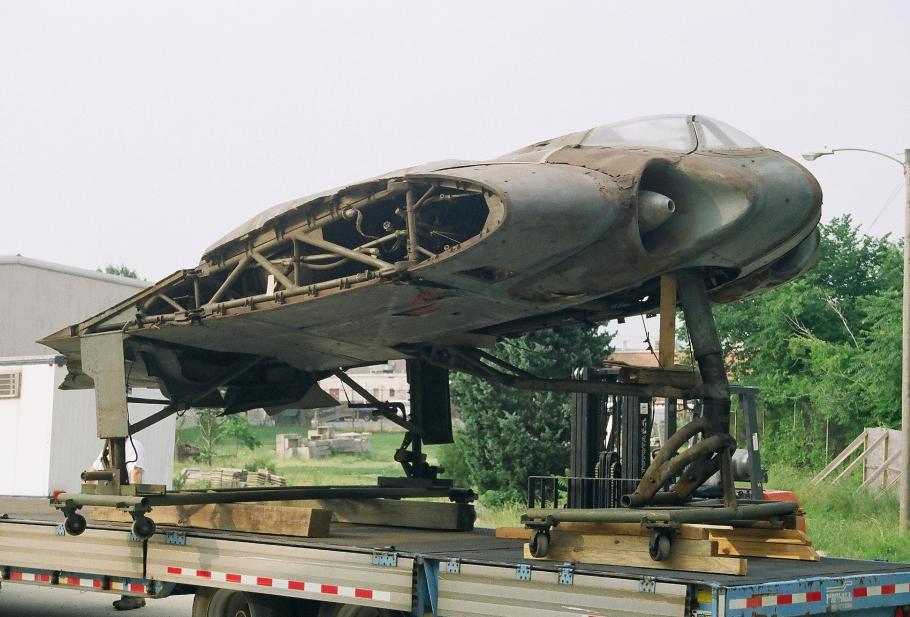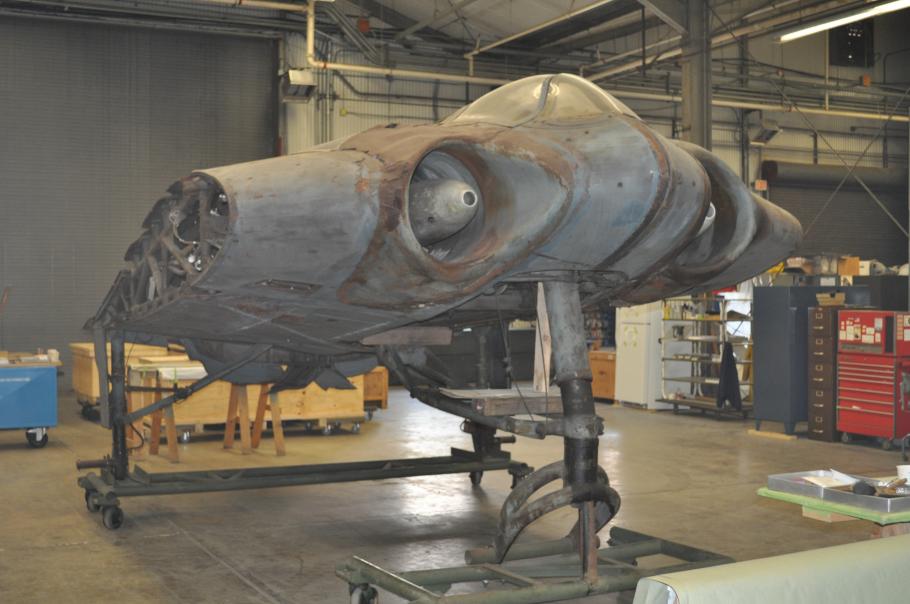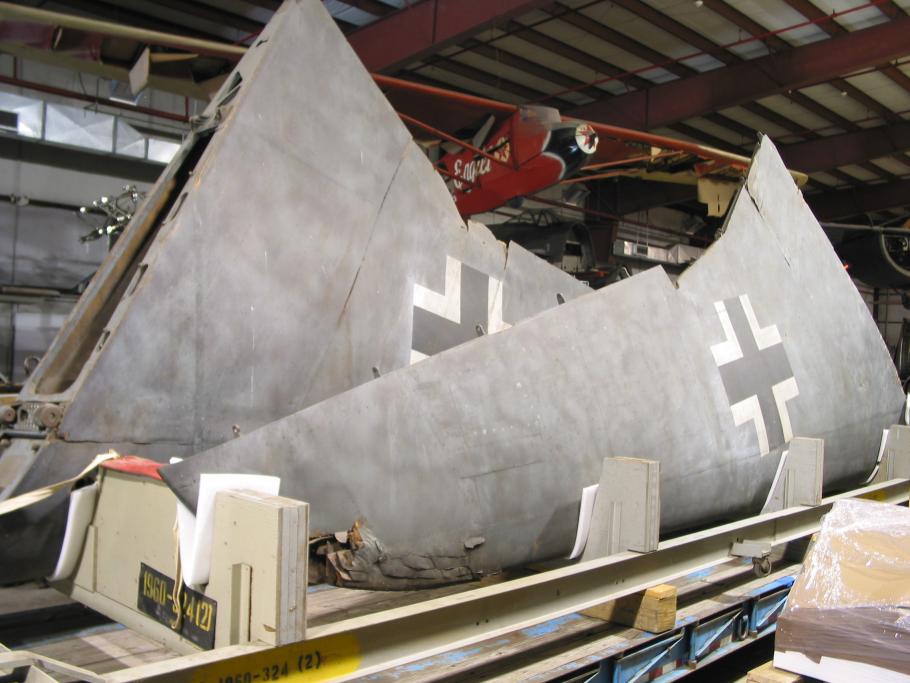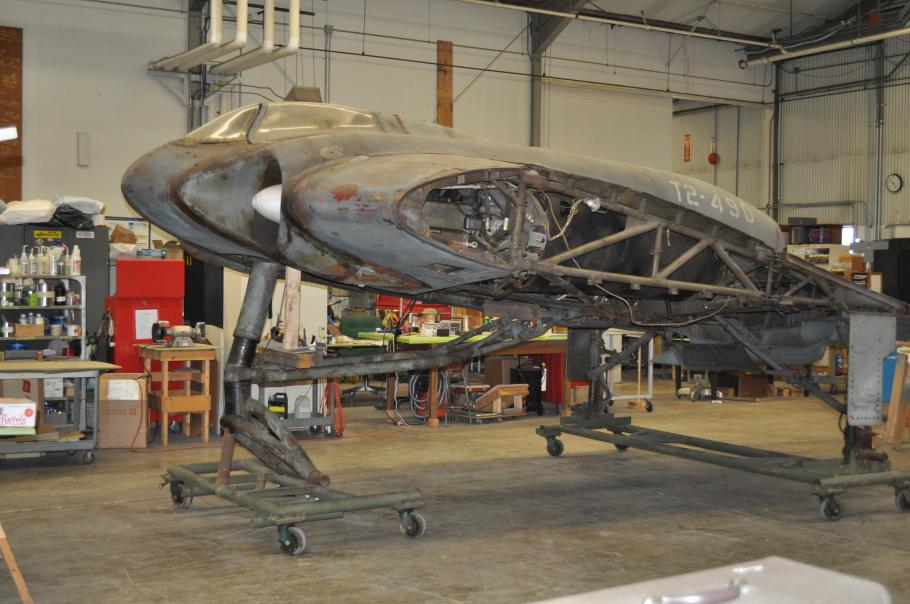Early in June, staff of the Paul E. Garber Preservation, Restoration and Storage Facility slowly and carefully moved the center section of the Horten H IX V3 all-wing jet fighter from storage into the restoration and preservation shop. This is a significant event because many people have clamored for decades to see the H IX. In a few months, after conservators and treatment specialists from the National Air and Space Museum and the Smithsonian Museum Conservation Institute (MCI) have prepared the fragile center section, Collections Processing Unit staff will move it to the Mary Baker Engen Restoration Hanger at the Museum's Steven F. Udvar-Hazy Center for eventual public display.
Center section of the Horten H IX V3 at the Paul E. Garber Preservation, Restoration and Storage Facility in Suitland, Maryland.
The Museum's Horten H IX V3 is the only extant example of the world’s first all-wing jet aircraft. Artisans finished the first prototype as a glider. Two Junkers 004 jet engines powered the second prototype and German test pilot Erwin Ziller completed two test flights at the controls of this aircraft, called the H IX V2 ("9-vee-two"), but he died during the third flight when one engine failed and the jet crashed. At a workshop in west central Germany in mid-April 1945, Allied ground forces recovered the center section of the H IX V3, or “Bat-Wing Ship” as one intelligence officer described it. This prototype was under construction at the time and missing its outer wing panels. U. S. Army Air Forces Technical Intelligence specialists shipped the wing to Freeman Field, Indiana, with intermediate stops in Farnborough, England, New York, and Newark, New Jersey. The Allies had managed to recover a set of H IX outer wing panels and technicians attached the panels to the H IX V3 center section before the wing was transferred to the Smithsonian during the late 1940s.
The Museum's Chief of Conservation Malcolm Collum and artifact treatment specialist Bob McLean, along with Melvin Wachowiak (Senior Conservator), Donald Williams (Senior Furniture Conservator), and Jennifer Giaccai (Conservation Scientist) from the MCI, will spend the next few months carefully examining and analyzing the many different materials and techniques used to construct the jet more than 65 years ago. The team’s goal is to stabilize the artifact so that the Museum's Collections Processing Unit staff can move the fragile center section to the Udvar-Hazy Center where the outer wing panels have been stored since January. If the team concludes that the wings and center section are strong enough, then specialists will attempt to join the three major components. The team plans first to analyze the paint colors found on the jet, and identify the wood filler putty and the interior wood sealant. Conservators will compare plywood samples from the center section and the wing panels to determine their origins and whether the wing panels were skinned with plywood during the war by the Germans or after by U. S. Army Air Forces personnel. They want to determine the type of wood, ply thickness, adhesive type, adhesive additives, and how the German artisans glued the plys together. The Museum's long-term goal is to prepare the aircraft for permanent display but the immediate objective is to stabilize the fragile center section. Museum and MCI staff will search the literature for similar projects, and then experiment with various materials to build a protective structure around the center section. Reimar Horten designed the Horten IX and in the early 1980s near the end of his career, he claimed to have used techniques and materials to render it difficult to detect with radar. Smithsonian conservators will search for evidence of special radar absorbing compounds in the plywood skin that cover the leading edges of the center section and the outer wings. They will document each stage of the project using multiple media formats and blog about any new discoveries so please check back.




